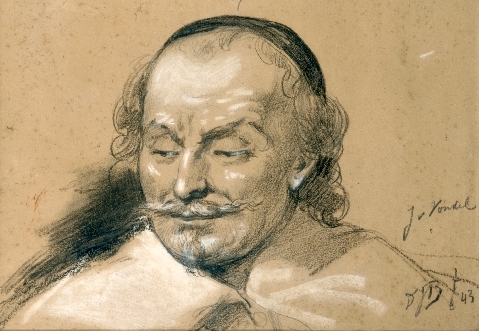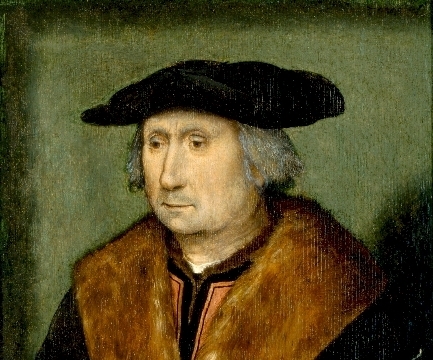The first Dutch poet laureate
Vondel was the greatest poet of the Golden Age and one of the greatest poets ever to have written in Dutch. Over the centuries Vondel remained famous, but also controversial.
Read more
Joost van den Vondel by J.D. Bles, a drawing from 1843.
Vondel was the greatest poet of the Golden Age and one of the greatest poets ever to have written in Dutch. Over the centuries Vondel remained famous, but also controversial.
Read moreWhen we think of the Golden Age, we think of Hooft: an atypical Dutchman – cultivated, generous tolerant and courteous. His poems are still read and sung today, and his plays are performed regularly.
Read moreEveryone has heard of Michiel de Ruyter, but hardly anyone knows of Petrus Francius, shown here when he was in his forties. Yet the latter was celebrated throughout Europe. Pieter de Frans was a professor at the Athenaeum Illustre, the precursor to the University of Amsterdam.
Read moreThe old catalogues of the University Library are preserved with care – and rightly so, because each is a monument to scholarship. They show us what the library looked like at various points in its long history.
Read moreGerardus Vossius was actually an immigrant: he was born near Heidelberg. The scholarly Vossius died a citizen of Amsterdam, however; and what’s more, he was one of the founding fathers of the UvA.
Read moreThe black-figure technique was invented in Corinth in about 700 B.C. and adopted by the Athenian workshops in approximately 630 B.C. How were the characteristic black-figure and red-figure vases actually made?
Read moreThe Greek world comprises more than modern Greece. Colonies were founded in Sicily, southern Italy and the west coast of modern Turkey. After the defeat of Persia Greece flourished.
Read moreIs there a link between economic growth, science and art? Of course there is! And nowhere else was this clearer than in Amsterdam in the final quarter of the nineteenth century.
Read moreSince the arrival of Alexander the Great Egypt was administered by the Greeks, and after the death of Cleopatra, the Roamn Emperors took over.
Read moreThe most striking aspects of the country at this time were the attention life life after death and the many gods who were adored there, both in human and animal form.
Read moreToday the term 'Copt' refers to a member of the Coptic Church of Egypt, while archaeologists regard a Copt more generally as any Christian inhabitant of Egypt in the first centuries of our era.
Read moreThe Greek Bronze Age started around 3000 B.C. when the people were able to work metal. Their need for copper and tin, the two components of bronze, as well as their surpluses of olives and woollen products resulted in thriving trade relations, which greatly contributed to prosperity.
Read more
Detail of a portrait of Thomas More. Flemish, c. 1510. This is the oldest painting in the collection of Gerardus van Papenbroeck.
In 1743 Gerardus van Papenbroeck donated 52 portraits of scholars to Amsterdam’s Athenaeum Illustre, to inspire the students. Nowadays they look down on doctoral degree ceremonies in the Agnietenkapel, setting a good example for others to follow.
Read more